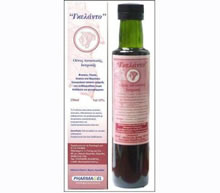
Λεξικό .. Honeybee venom composition
Honeybee venom composition
A new analytical approach using matrix-assisted laser desorption/ionization mass spectrometry imaging (MALDI MSI) for the study of honeybee venom has been demonstrated. In vitro and in vivo models simulating the bee sting have been developed using live honeybees and, as the envenomation sites, pig ears and rat legs;
MALDI MSI has been used to map, over time, the diffusion and distribution of three venom allergens (Api m 1, Api m 4, and Api m 6) and two venom toxins (apamine and mast cell degranulating peptide). In conjunction with other classical biochemical techniques and high resolution mass spectrometry (HRMS), structural data have been obtained that contribute to current understanding of honeybee venom composition. Initial data have also been obtained demonstrating the feasibility of mapping the organism's response to the sting.
The opportunity to monitor venom diffusion and the organism's response at the same time might open new pathways for in vivo preclinical studies in designing and testing new venom immunotherapy (VIT).
References
Francese S, Lambardi D, Mastrobuoni G, la Marca G, Moneti G, Turillazzi S. Detection of honeybee venom in envenomed tissues by direct MALDI MSI. J Am Soc Mass Spectrom. 2009 Jan;20(1):112-23. Epub 2008 Sep 7.
Γκέλης Ν.Δ. - Λεξικό Αλλεργίας - Εκδόσεις ΒΕΛΛΕΡOΦΟΝΤΗΣ - Κόρινθος 2013
Gelis Ν.D. - Dictionary of Allergies - VELLEROFONTIS Publications - Corinth 2013




